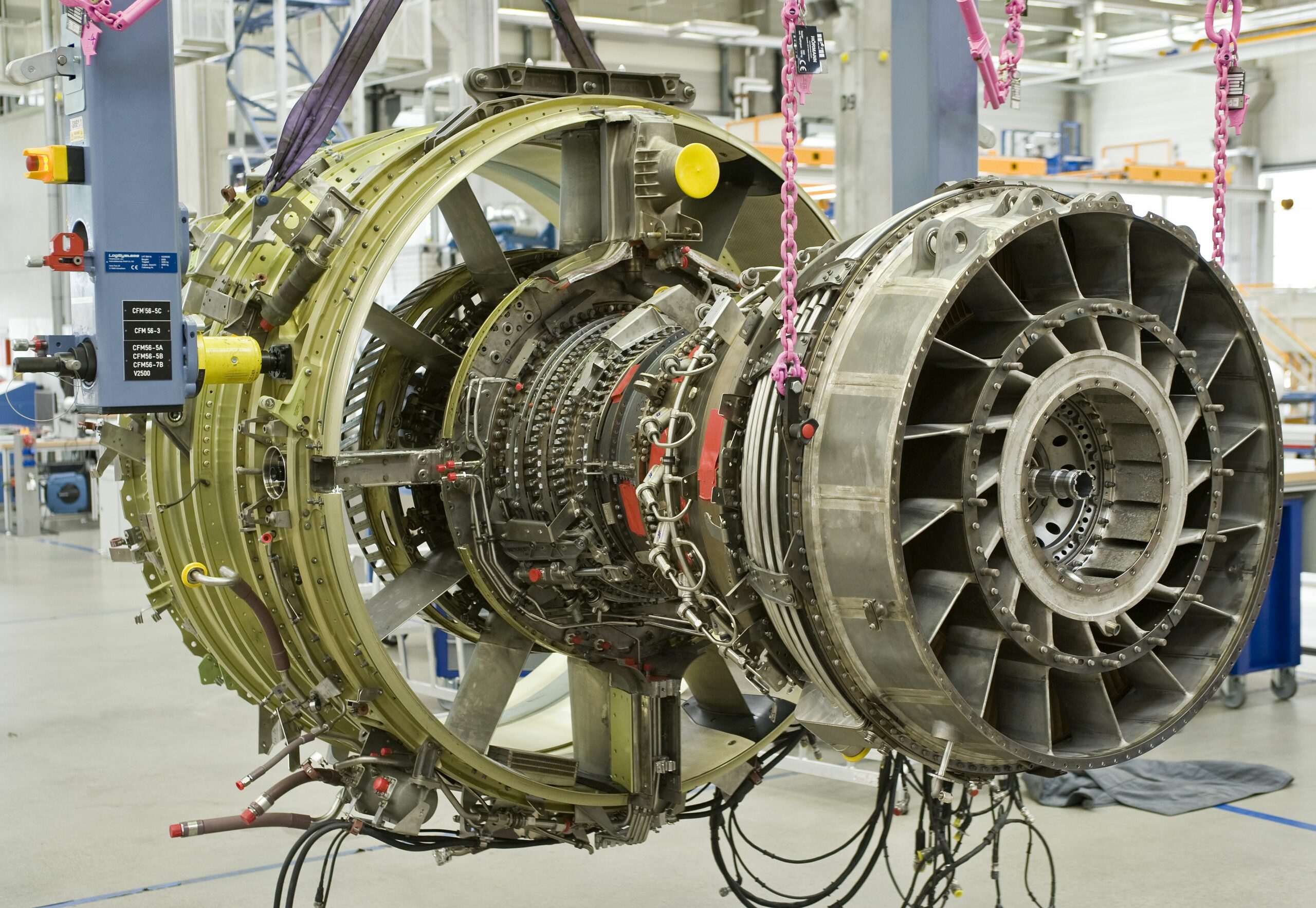
WestJet maint CFM56 7B CR LufthansaTechnik scaled
Aftermarket sales of spare parts for CFM LEAP and CFM56 engines have recovered to well over 2019 levels, the first time this happened since the pandemic. Sales were up 36.5 percent in HY1. As this trend is expected to continue this year, Safran Group has raised its full-year guidance and now expects a €3.1 billion operating profit, up from €3.0 billion in the February guidance. CFM56 and LEAP aftermarket sales are a boost for Safran.
Civil aftermarket revenues are guided to increase by mid to high-twenties in dollars compared to the low twenties in the previous guidance, Safran CEO Olivier Andriès said on Thursday during the HY1 results earnings call.
Aftermarket sales were already up 38.1 percent year on year in Q1 and again by 35 percent in Q2. This reflects higher part prices since November last year but mostly the recovery of global air travel in the past months. In July, worldwide CFM flight cycles increased to 103 percent of 2019 levels. Only Europe, which is affected by the closure of Russian airspace, and the Asia Pacific region are behind.
Increased flight cycles mean that there is more demand for spare parts and MRO work for the new-generation LEAP engines, but also for the CFM56. Because of the delivery delays at Airbus and Boeing, older-generation A320ceo’s and 737NGs continue to fly. Andriès pointed to the low retirement level of the CFM56-powered aircraft of just 94 in the past six months.
2.000 shop visits this year
CFM says it is on track for shop visits of 2.000 CFM56 engines this year. As CFM CEO Gaël Méheust explained during a pre-Paris Airshow presentation, of the 24.000+ CFM56-5B and -7B engines that are in service, some 11.000 have yet to do their first shop visit. This gives aftermarket sales plenty of opportunities to grow in the coming years. CFM will provide spare parts for the CFM56 until at least 2040.
Andriès confirmed that CFM delivered 785 LEAP engines in HY1, in line with what GE Aerospace said on Tuesday. This is up 69 percent versus the same period of last year and up fourteen percent on Q1. CFM is on target to deliver 1.700 LEAPs this year. The engine maker has a backlog of some 9.600 engines, thanks to recent orders from Ryanair, Avolon, and Jet2. This excludes the 800 engines announced this month as part of the large Air India order.
While its rival Pratt & Whitney is suffering from a range of issues with its Geared Turbofan and has only a limited number of spare engines available, Andriès is proud that CFM has sufficient spare engines. “We have a policy of keeping our customers flying. This is a real difference to our competitor. We keep our airlines flying all the time. There is no disruption, never.” As reported today, the Safran CEO confirmed that CFM has been confronted with a similar powder metal contamination problem as P&W, but the problem seems to be on a lower scale.
HY1 results
Safran Group, which includes Propulsion, Equipment & Defense, and Aircraft Interiors, posted a net profit in HY1 of €1.085 billion compared to €551 million in the same period of last year. Consolidated adjusted revenues increased to €10.945 billion from €8.560 billion. The recurring operating income was €1.397 billion, up from €1.047 billion. Free cash flow was €1.463 billion, thanks to advanced payments for Rafale fighter aircraft.
Aerospace Propulsion, which includes civil, military, and helicopter engines, contributed €5.677 billion to this result and produced a €1.046 billion profit from operations. Equipment & Defense generated €4.1 billion in revenues and reported a €459 million operating profit.
Aircraft Interiors including cabins and seats recorded €1.163 billion in revenues, which is still 41 percent below 2019 levels. The unit was loss-making at €-100 million and subject to €38 million in impairments. This is attributed to lower Business Class seat deliveries, notably to Boeing for the 787. Safran is also waiting for certification of other new cabin products, so was confronted with development costs and cost overruns. Aftermarket sales were back at 2019 levels in June.
Aircraft Interiors should reach break-even by the end of this year, thanks to further cost optimizations that include the transfer of activities from the US to Mexico and from Germany to Tunisia. Safran has a market share of 35 percent in cabins and seats and sees strong demand for its products, which makes it confident about the future.
Safran continues to be affected by high inflation and supply chain issues, notably in the production of landing gears. On the positive side, the weaker US dollar has a positive effect on sales. During HY1, Safran, Airbus, and Tikehau Ace Capital completed the acquisition of Aubert & Duval, a key supplier of metallic parts to the engine and aircraft maker. The three shareholders will invest €300 million in the company over the next four years.
Views: 82



